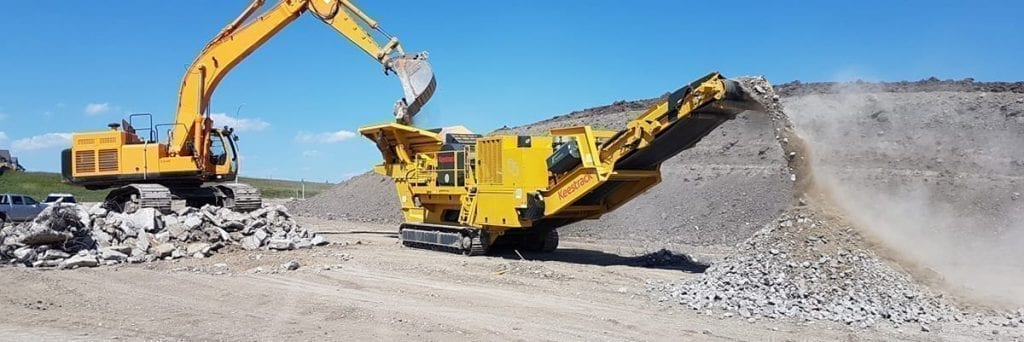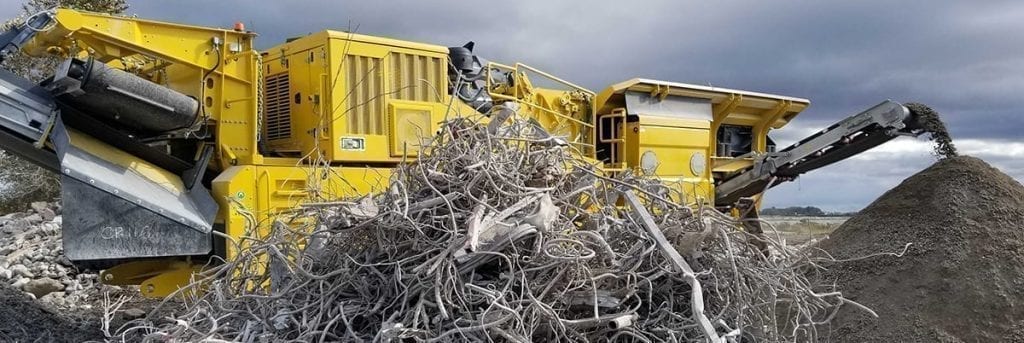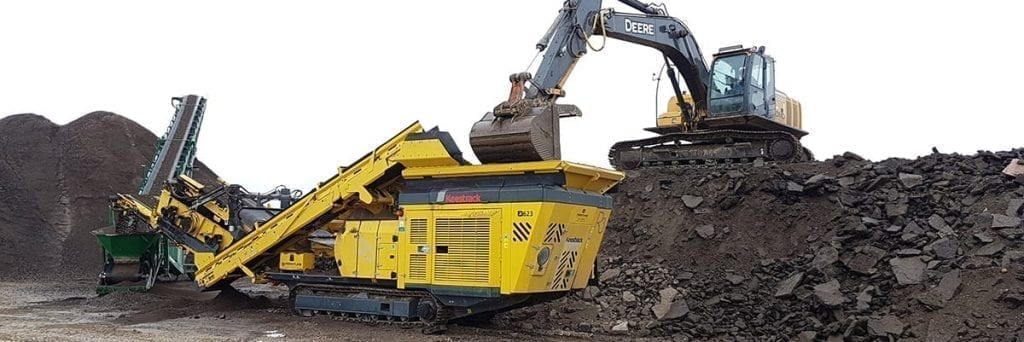Concrete and Asphalt Recycling
The demolition of original concrete and asphalt structures such as buildings, roadways, parking lots and sidewalks can result in thousands of tonnes of aggregate material. Material which is costly to move, expensive to dispose of and can have negative impacts to our environment. These factors, combined with new technologies, have resulted in a growing trend in asphalt and concrete recycling throughout Canada and other parts of the world.

Benefits of Concrete and Asphalt Recycling
Concrete and asphalt recycling have many economical and environmental benefits. Traditionally once removed, asphalt and concrete would be hauled to landfills for disposal. This process was costly due to high freight costs and growing tipping fees. Traditional disposal of demolished concrete caused additional strains such as increased truck traffic and the need for new landfills. The implementation of environment laws, tax credits and recycled material requirements for building LEED certifications have also aided in increasing the attractiveness of concrete and asphalt recycling today.
How is Concrete and Asphalt Recycled?
Concrete
Concrete recycling begins with the blasting, breaking and and / or removal of concrete. This material can be hauled away to a recycling facility or more economically, be crushed on site with a portable or mobile crusher.
For concrete recycling, impact crusher or jaw crushers are often utilized for crushing the demolished concrete. Dependent on the feed size and desired product specification, the crushing process can be achieved in a single pass while some applications may require a primary and secondary crush combined with a screen in the process.

Technology advancements in crushing equipment have enhanced concrete recycling processes including the removal of metal contaminants, ability to handle reinforced and structured concrete, and improved size reduction.
Some crushing spreads can be equipped with over band magnets for the removal of metals including rebar and other steel remnants. With the integration of a screen deck and a recycling over-sized conveyor, defined specifications can be easily achieved within a single crushing spread.
After the crushing process is complete, the recycled concrete can be used as a fill, road base or be mixed with virgin aggregate in the production of new concrete.

Asphalt
Recovered asphalt from the removal of roads, parking lots and driveways is used in reclaimed asphalt pavement (RAP). When crushed and screened properly, recycled asphalt can consist of high-quality aggregates readily used in the creation of hot-mix asphalt products. The use of RAP reduces energy consumption, lowers transportation costs required to source virgin aggregate, and reduces the need to utilize new natural resources.
Mobile and track mounted impact crushers have risen in popularity in asphalt crushing applications. The crusher rotor design aggressively throws the material within the crushing chamber which can result in an ideal product shape with a finer grade gradation for the production RAP. Impact crushers can also be designed with a screen box for a closed-circuit set up. This process ensures all over-sized material coming off the screen would be returned to the crusher to be crushed further down to the desired size.

Considerations for Concrete and Asphalt Crushing
What type of crusher to use in concrete or asphalt recycling can vary depending on your material types, contamination levels, size reductions, and the desired end product.
Equipment options, configurations and parts used can have a large impact on the productivity and performance of any concrete or asphalt crushing project. For instance, features such as pre-screens and side dirt conveyors aid in the removal of fines in the material prior to crushing. This process can help reduce wear part costs and improve production. Whereas integrated screening plants can serve functions such as screening up to 3 products or providing a closed-circuit spread. Additional features such as air knifes aid in the removal of light debris such as plastics.

Like all crushing operations, the crusher configuration and system should be properly selected and dialed in for that specific application in order to achieve optimal performance.
